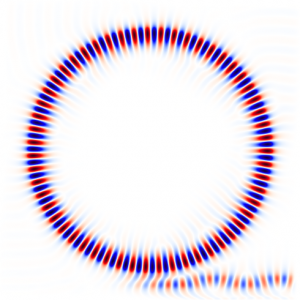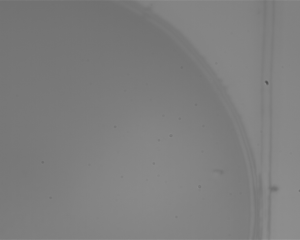In this project, we are using the fact that the spectral sensitivity of the resonance of the light coupling between a waveguide and a disk is very high. When a laser beam is sent through a waveguide it may be coupled to the disk. There are some parameters that determine whether the coupling will happen. Some of these parameters are the wavelength of the laser, the radius of the disk, the width of the waveguide and the distance between the waveguide and the disk. If there is coupling for a given geometry and wavelength, then this coupling cannot be seen if the wavelength is changed with a certain amount. Similarly, if the geometry is changed, for instance if the radius of the microdisk is increased, then there will be no coupling for that given wavelength. In this case, the easiest way to regain the coupling is to sweep the wavelength of the laser.

In our experiments, we firstly find the resonant wavelength for the case the gas concentration is zero. After that, a small amount of gas is sent into the environment. Due to the presence of the gas, the radii of our disks begin to increase, since there is adsorption of gas into the disks. This adsorption changes the geometry of the system, therefore the resonant wavelength shifts. With a tunable laser, we can find this resonant wavelength. By looking at the shift in the resonant wavelength, we can conclusively determine the gas concentration in the environment.

Our aim is to sense some of the explosive gases, such as hydrogen. Hydrogen gas interacts with the oxygen in the air and explode if its concentration is 4% or higher. However, we hope to sense hydrogen concentrations of 0.1% and smaller, which is well below the critical point.
Because of its excellent optical and mechanical properties, we are using SU-8, which is a negative tone photoresist, to fabricate waveguide and disk structures. The ease of fabrication is quite high since we are using standard photolithography techniques. This project is not limited to the explosive gases. It can be easily turned into solving biosensing or bioimaging problems.
 @kirazlab
@kirazlab